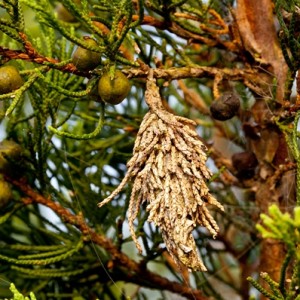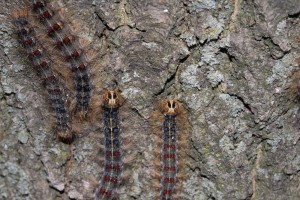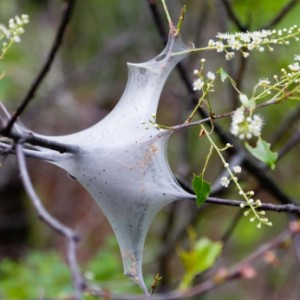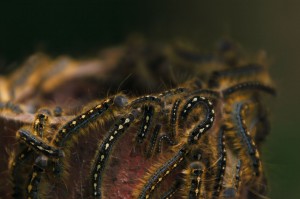What are those webs in the trees?
One of the most conspicuous tree pests are those who create silken webs. Homeowners will see these webs in trees and find an abundance of worms (or caterpillars) eating the leaf tissue. As with any pest issue, the first key is identifying what insect is feeding. After that, using that information to correctly treat for control is critical. Figure out what you are dealing with, and then seek the proper treatment to protect your trees from damage.
Identification
A common mistake is to refer to these feeding larvae as “bagworms”. If you are looking at conspicuous webbing, you are not looking at bagworms even if it looks like a silky bag in your tree. Another mistaken pest is the Gypsy Moth caterpillar; however, they don’t construct webs like these. Most of the culprits of this type of evidence are usually either tent caterpillars or webworms of some sort. Treatment for either of these tree pests is the same.
Spray trees when the pests are beginning their activity with a labeled insecticide. Contact of most materials will be enough to get rid of these pests for that season. However, some pests such as webworms may have a couple generations so keep an eye out for the resurgence later in late summer or early fall. If the infestation is extremely minor, you can even just prune the infected branch off and physically remove the pests. The key identification characteristics between these two pests are the placement of their webs and the time of year you notice them.
Tent Caterpillars
These larvae will be noticed early in the spring when new leaves of many varieties of trees are emerging. Here Lancaster, PA tree spraying for these caterpillars usually occurs in late April or early May. Tent Caterpillars get their name from how they construct their webs. Webs are built in the crotches of branches in the interior of the tree for the most part. The webs are vacated for feeding, and then the larvae return at night to the web nest.
Webworms
These larvae will be noticed in mid-summer and then again in early fall for some varieties. Unlike the Tent Caterpillars, these pests will construct loose webs in areas on the ends of branches where they are feeding. They remain in the webs and construct new ones for the span of their activity.
These pests rarely cause major damage to plants on an occasional infestation, particularly when it is isolated on a small area on a tree. However, there have been frequent cases where they continuously infest trees year after year, consuming much of the foliage. This is ultimately detrimental to the tree as it inhibits photosynthesis. Spraying for caterpillars and webworms can be done as a reactive approach when they are noticed, but then there is already damage present. However, if you use a professional tree service to implement a plant health care program these issues can be proactively treated before damage gets severe.
If you are interested in learning more about protecting your trees from Webworms and Tent Caterpillars or other pests, please don’t hesitate to contact us.





